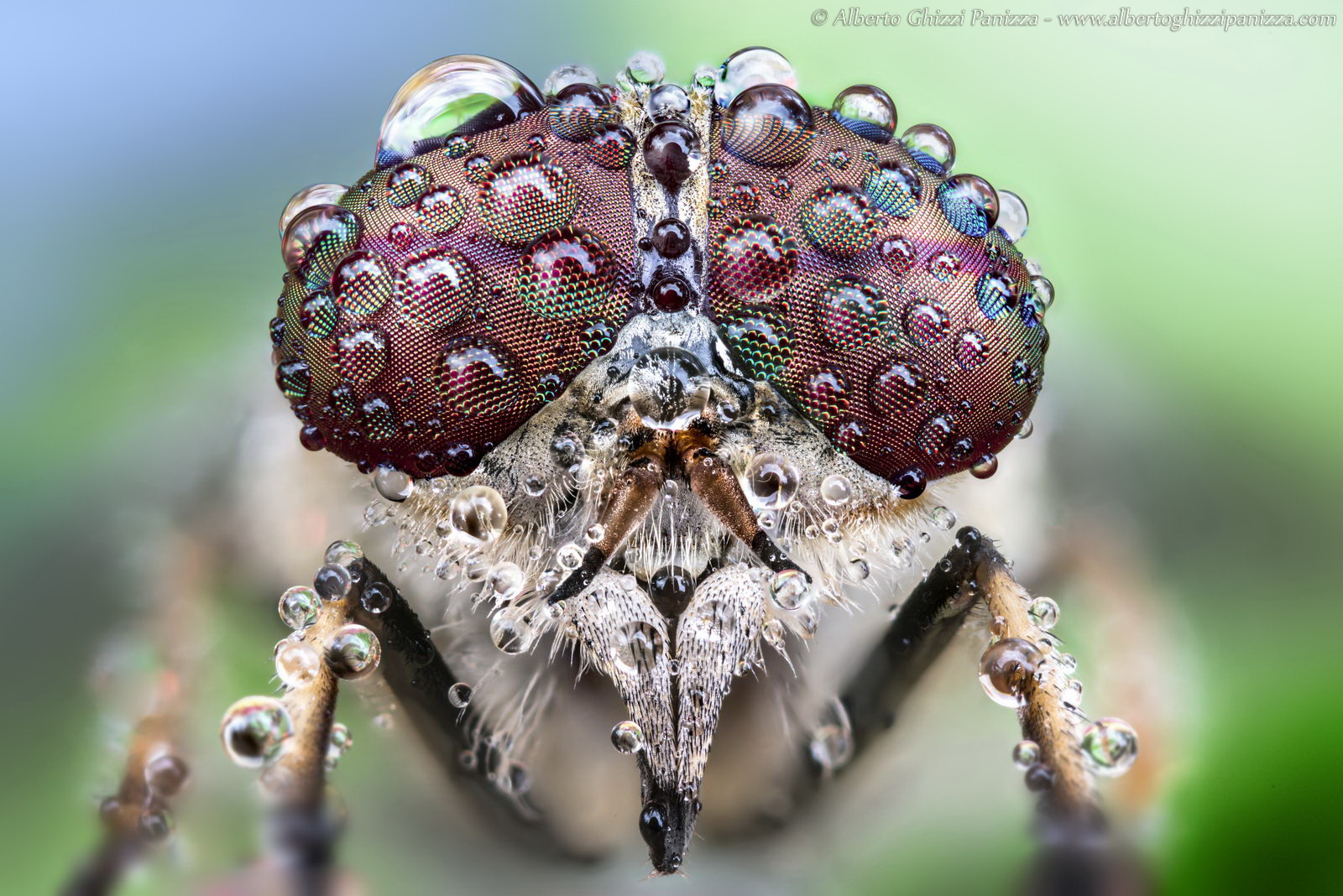Yhtenäiskenttäyksiköt
Kuinka saadaan 3D-kuva koko galaksilla yhdellä otoksella
Kuvittele mielessäsi kärpänen. Oletko milloinkaan yrittänyt pyydystää kärpästä? Sinun on paras olla nopea, sillä useimpien hyönteisten tavoin kärpäset voivat havaita liikettä 360° ympärillään. Niiden salaisuus on verkkosilmissä, jotka koostuvat suuresta määrästä pikkuruisia valoa aistivia soluja (nimeltään ommatidi). Nämä toimivat yhdessä muodostaen yhden, hyvin laajan mosaiikkinäkymän. Muurahaisilla voi olla mitä tahansa muutamasta ommatidista tuhanteen. Kärpäsillä ja mehiläisillä on joitakin tuhansia ommatideja, kun taas perhosilla ja sudenkorennoilla niitä on kymmeniä tuhansia. Mitä suurempi ommatidien määrä, sitä laajempi näkökenttä ja terävämpi näkö hyönteisellä on.
Samalla periaatteella, mutta täysin eri käyttötarkoitukseen, tiedemiehet ovat kehittäneet havaintolaitteen, jota kutsutaan yhtenäiskenttäyksiköksi (integral field unit, IFU). IFU:ssa näkökenttä on jaettu moneen soluun tai segmenttiin kattavan yleisnäkymän saamiseksi kokonaisuudesta. IFU:ja käytetään laajalti Maapallon kaukokartoituksessa ja erityisemmin sään ennustamisessa sekä luonnonmullistusten ja ilmastonmuutoksen seurannassa.

IFU:ja käytetään tähtitieteessä tutkittaessa laajoja kohteita, kuten kaasusumuja, galakseja, tähtijoukkoja tai galaksijoukkoja kertakuvauksella, käytettäessä yhtenäiskenttäspektroskopiaksi kutsuttua tekniikkaa. Tällä menetelmällä kentän jokaisen solun tai pikselin signaali syötetään spektrograafiin, joka sitten muodostaa spektrin jokaisesta erillisestä pikselistä. Kaikki tulosspektrit järjestetään datakuutioksi (katso Kuva 1), joka käsittää koko 2D-näkökentän ja lisäksi kolmannen ulottuvuuden, joka on tuotettu spektrograafista, joka jakaa valon eri väreihin tai aallonpituuksiin (katso Kuva 2). Tähtitieteilijät voivat käyttää yhtenäiskenttäspektrofraafien tiedon runsautta mitatakseen esimerkiksi kaasun liikettä etäisessä galaksissa (katso eso1437) tai näkökentässä olevien eri galaksien etäisyyksiä (katso eso1507).
Erityyppiset IFU:t käyttävät eri tekniikoita jakamaan näkökenttää. Kolme tärkeintä tähtitieteessä käytettyä ovat:
- Mikrolinssisarja (hyvin samankaltainen hyönteisten verkkosilmien kanssa).
- Valokuitukimppu, jota voidaan käyttää yksinään tai yhdessä mikrolinssisarjan kanssa (katso Kuva 3).
- Kuvanjakaja (katso Kuva 4).
Ensimmäinen idea IFU:sta tuli G. Courtesilta vuonna 1982. Sen ensimmäinen käytännöllinen sovellutus tähtitieteessä toteutettiin havaintolaitteell TIGER, jonka ensimmäinen kuva otettiin vuonna 1987 Havaijin Mauna Kealla sijaitsevalla 3.6-metrisellä CFHT-teleskoopilla (Canada-France-Hawaii Telescope). TIGER:in IFU in minilinssisarja.
ESO:n ensimmäinen yhtenäiskenttäspektrograafi oli SINFONI, jonka ensimmäinen kuva otettiin VLT-teleskoopilla (Very Large Telescope) vuonna 2004. SINFONI toimii kuvanjakajana, samalla periaatteella kuin uudempi havaintolaite MUSE, jonka IFU on jättimäinen. Usean kohteen spektrograafissa FLAMES on myös kaksi yhtenäiskenttäyksikköä, siinä missä toisen sukupolven infrapunaspektrograafissa KMOS on 24 pientä IFU:a, joista kukin on asennettu siirreltävään varteen. Havaintolaitteessa VIMOS on myös jokseenkin laaja IFU, joka yhdistää mikrolinssit ja valokuitukimpun. Kaikkien näiden havaintolaitteiden ominaisuudet ovat erilaiset — ne ovat herkkiä eri aallonpituuksille, niillä on erilaiset näkökentät ja eri spektriresoluutiot — mikä tekee niistä sopivat havaitsemaan erityyppisiä kohteita ja ratkaisemaan erilaisia tähtitieteellisiä ongelmia.
Yhtenäiskenttäspektrograafeista on tulossa yhä monimutkaisempia, yhä suuremmilla ilmaisimilla, ja kykeneviä tarjoamaan terävämmän ja syvemmän kolmiulotteisen käsityksen maailmankaikkeudesta. Palaten vertaukseen hyönteisistä, IFU:t ovat kehittymässä muurahaisista sudenkorennoiksi.
Tieteen huippuhetkiä
- Katso FLAMES:in tieteen huippuhetkiä.
- Katso VIMOS:in tieteen huippuhetkiä.
- Katso SINFONI:n tieteen huippuhetkiä.
- Katso MUSE:n tieteen huippuhetkiä.
- Katso KMOS:in tieteen huippuhetkiä.



